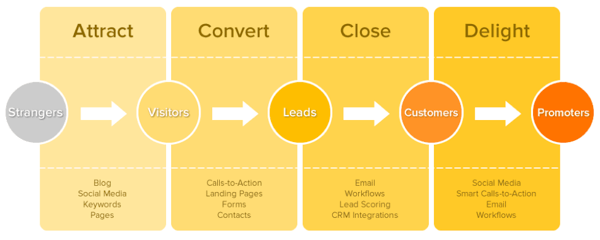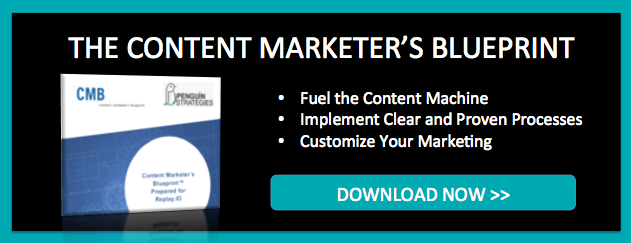
When deciding what my next blog post is going to be about, I tend to check in with my team to see what’s going on with them and with our clients. I want to pick “hot topics” but sometimes the hottest topics originate from the conversations happening right outside my office door.
A question that was raised recently in our office dealt with the difference between lead generation vs demand generation. Are they the same thing? What do they have to do with an inbound marketing strategy? Should we even care about the difference? Is it worth it?
Demand Generation: Why Inbound Marketers Should Care
Our friends at HubSpot define it as, “… the umbrella of marketing programs that get customers excited about your company’s product and services.” In another post on the topic, the team at Leadformix says that, “Demand generation covers all marketing activities that create awareness about your product, company and industry.”
So if demand generation is just about creating a buzz about your product or service, what makes it any different to anything else you may be doing as a marketer? Isn’t the idea of any form of marketing to get people excited about whatever it is that you are doing or selling?
So the answer to this is yes and no. Demand generation is about getting people excited about your product or service- that’s for sure. However, it’s also about nurturing relationships with both prospects and customers. The goal is to be sure that you’re getting a good number of leads through your demand generation efforts, but that these are good, qualified leads. After all, if you get a bunch of leads, but none are “serious” or convert, what was the point?
So how does demand generation “work” in practice? To put it simply, your inbound marketing strategy is a piece of the demand generation puzzle. Demand generation includes elements of both inbound and outbound marketing, but as we know, inbound marketing is a method by which interest is created by drawing your prospects towards you or your company via informative, trustworthy content. Demand generation connects the dots between your marketing team and your sales team by helping to assure that quality leads come your way.
Lead Generation: What Does it Mean?
At first, lead generation is exactly what it sounds like - the generation of leads. But there’s more to it than that. The Digital Marketing Glossary defines lead generation as “…the use of marketing techniques and actions to obtain potential customers’ contact details. Websites and digital marketing are major sources of lead generation.” So, it’s true that leads are collected via a number of channels, but the reason for the generation varies.
For a long time, lead generation was considered to be the result of paid methods of marketing like advertising. However, in the world of inbound marketing, lead generation is the way that a lead confirms his or her interest in your product or service by filling out a form in order to receive a piece of collateral that you’re offering. The lead may come to you via a telephone call, a personal referral or through the Internet as per the definition mentioned above. According to the inbound methodology, lead generation fits the second step where visitors to your website (or other content) convert to leads:

Lead Gen vs Demand Gen: Does it all come together in the end?
The relationship between lead generation and demand generation seems to be symbiotic to a point.
One school of thought believes that demand generation assumes that most leads have already passed through the awareness stage of the buyer’s journey and recognize that they have a problem or an issue that needs to be resolved. However, if the potential buyer hasn’t reached this stage, some form of lead generation activity will be needed to coax the prospect down through the sales funnel via another method. In this case, lead generation is a tactic by which demand generation happens or continues.
A second school of thought led by B2B marketer Eric Wittlake believes that lead generation is actually hurting demand generation to a point. Demand generation doesn’t make use of gated content in the same way that lead generation does. As we can see above, landing pages are a common tactic used to convert leads, but they require the lead to voluntarily give their contact information or other data in order to receive an offer of content or some other type of collateral. Wittlake believes that lead generation creates a demand for “...your content, not your offering,” while demand generation creates a demand for the products or services as opposed to your content. This school of thought concludes that lead generation must come before demand generation or vice versa, but it cannot be done together.
The inbound marketing methodology works within the parameters of the first camp on this issue. The buyer’s journey is paramount to how and when we generate leads and get them interested in our product or service. Lead generation simply serves as a method by which demand is strengthened or solidified.
What do you think? Did you know the difference between lead generation and demand generation before reading this post? What camp do you fit into? Leave us a comment below!

by The Penguin Team on April 09, 2015
As a leading B2B digital marketing agency, We help B2B Technology Companies, enterprise software, and hardware companies increase brand awareness, reach more qualified leads and close more customers. Penguin Strategies is a Diamond Partner of HubSpot.







